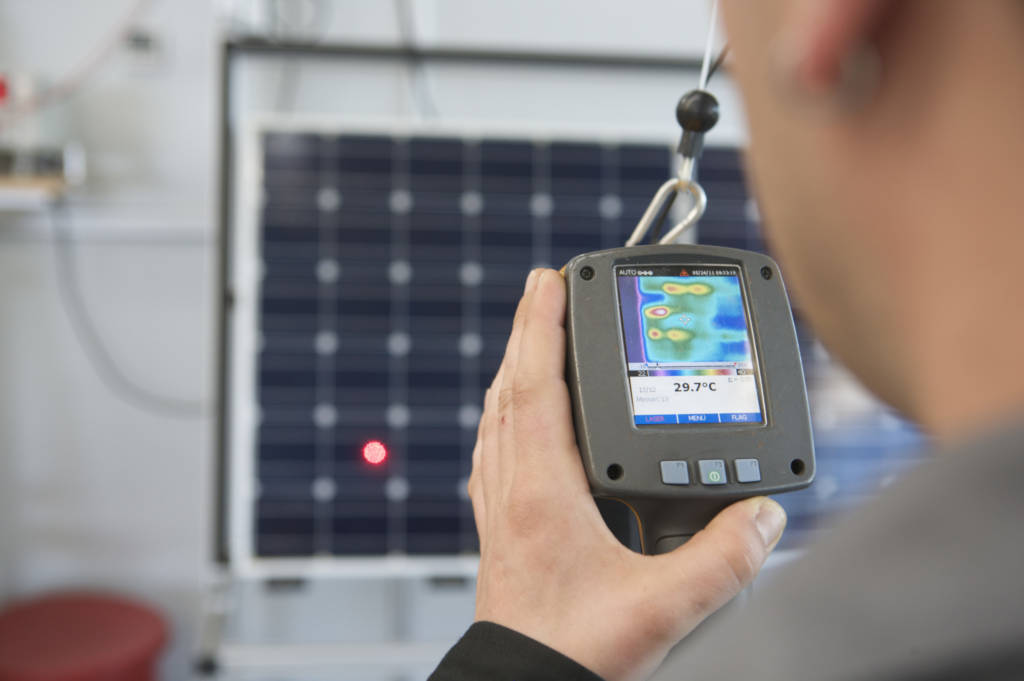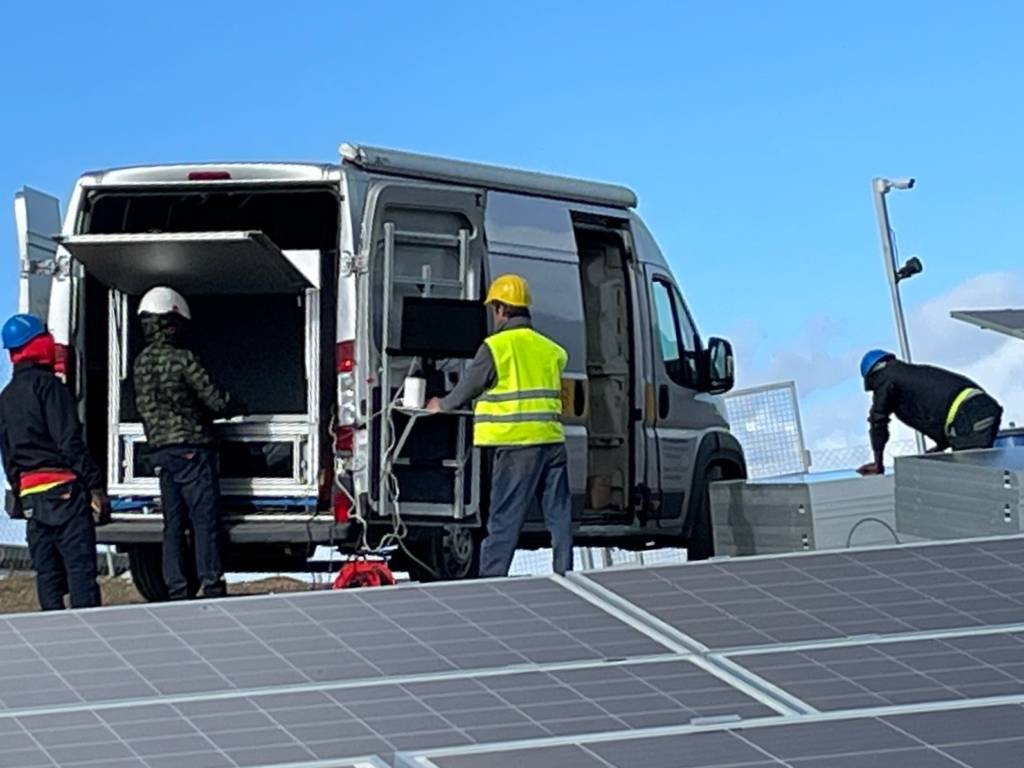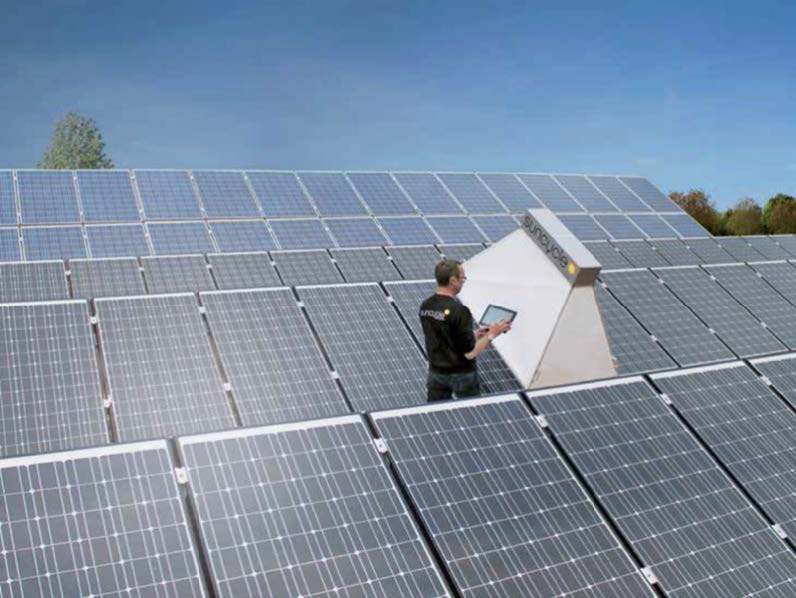TEST & INSPECTION METHODS
Suncycle offers the following test and inspection methods for photovoltaic systems on the customer’s premises or in our central PV service centre.
Individual test and inspection specifications can be agreed for every order. The results of the analysis can be processed for all photovoltaic components in an open-interface ticket system and provided for customers assigned exactly to every single serial numbers.
The modules are integrated in the service workflow per scanner. All identifiable faults are detected and recorded by camera during the optical check and cleaning. These include loose junction boxes, faulty cables, deformed frames, cell inclusions and breakages, delamination, visible hotspots and scratches on the rear.
The modules are placed in a water bath and 1,000 volts direct current are applied in this test. Only modules that uphold a resistance according to their surface for 2 minutes pass the insulation test. The test criteria comply with the current IEC standards.
The modules are powered backwards during the infra-red test to identify possible weak spots in the cell area, connectors and above all the junction box by means of the infra-red camera (thermal image).
The current performance is normally measured for all modules that pass through the PV service centre.
During so-called “flashing” (acc. to IEC 60904), the module is flashed with a calibrated flasher and the electrical output is measured (“flashed”) and the power determined under standard test conditions (STC).
Damage to the cells can be visualised by means of an electroluminescence test. The module is hereby photographed with three high-resolution NIR-CCD cameras at such a high resolution that even the smallest of cracks are detected. The test documentation comprises images of the complete module and of every damaged cell.
The electrical parameters in accordance with IEC 60904 are measured with a repeating tolerance of +/- 0.8%. The following values can be recorded in the PV service centre or on site at the system:
- Open-circuit voltage Uoc
- Short-circuit current Isc
- Voltage at the best possible operating point Umpp
- Current at the operating point with maximum output Impp
- Maximum achievable output Pmpp
- Filling factor

WE ARE EXPERTS TO MOVE OUR LABORATORIES WHEREVER THEY ARE NEEDED
Inspection & Maintenance
We test photovoltaic components and systems according to the manufacturer’s instructions and legal standards. All common requirements according to IEC and UE standards are included in the scope of our offer.
.

CTU Lab
The CTU lab is a solar simulator with integrated electroluminescence cameras It can be transported in a light van and deployed independently within a few minutes. It is characterized by its fast measurement speed and high capacity, being more like an industrial meter than a lab unit.
CTU Flex
The CTU flex is an electroluminescence meter that can operate in full daylight and without disassembling the modules of its structure. A great competitive advantage when assessing the condition of an installation in the field.

CTU Air
Our fleet of drones and qualified pilots allow us to perform work in virtually any situation.
The use of unmanned aircraft for large area inspection has become popular in recent years because of their ability and flexibility to multi-task. Suncycle goes further, and integrates all the tests performed in the facility, such as EL, thermography, visual inspections or IV curves, into a topographic model, allowing unprecedented traceability of plant activities.

